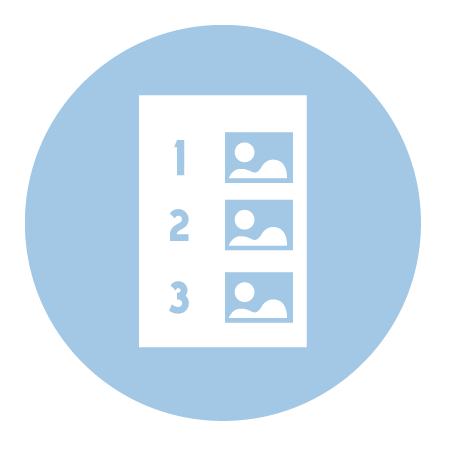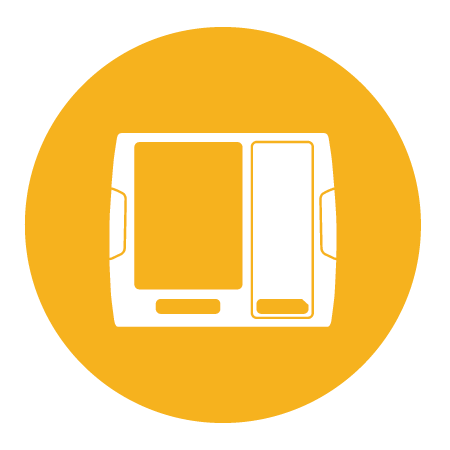When you think of educated voters, perhaps the first thought that comes to mind is a voter who is knowledgeable about the different candidates and issues on a ballot. But what about a voter who is knowledgeable on how their polling place’s new voting system works? Voter education goes a long way in ensuring your Election Day runs smoothly. Below are just a few best practices on how to best education your constituents on what to except from the equipment they use to vote with on Election Day.
Start Early
Voter education can be an ongoing process throughout the year with an increased focus at least 30 days before your early voting or absentee voting period begins. The more time voters have to see and process this information, the higher likelihood of retention and recall the day of voting. This also allows voters time to ask for clarification about how something will work before they actually vote. As some jurisdictions begin a transition to different types of voting technology, it’s important to help prepare your voters for their early voting or Election Day experience. You won’t regret the time and effort you spend helping voters adjust to a new voting system or perhaps just helping a new voter learn how to cast a ballot on an existing system. Make sure you understand where your voters are and what they need to truly be educated.
Starting early can also extend to constituents who are just reaching voting age. A high school registration drive or education program can help get your messaging out early. The same can be done on the college level should one be in the jurisdiction. Focus in this area could include information about the political process, ways they can find information about candidates or issues and information about registering to vote. This 2010 Best Practices Guide from Project Vote contains some useful tips on implementing effective high school voter registration drives. The League of Women Voters also published a training guide over Empowering the Voters of Tomorrow. Again, these best practices could be implemented on the college level as well.
Keep It Simple
Your voter education materials should be simple and direct. Include easy steps that your voters can follow. Include things you may think are common knowledge such as:
- How to properly mark their ballot
- How to register (especially if your state has recently moved to an online voter registration system
- Election Dates
- Registration deadlines
- Polling Place information
- Your website
Both you and your voters will appreciate this information being readily available, and less anxiety on Election Day will more than likely be a by-product. Also include versions of these materials in multiple accessible formats, such as in another language, large print, Braille, etc.
Types of voter education
 Posters: Printed posters are the most common form of voter education materials. Normally large posters are posted around the polling place on Election Day for voters to read while they check-in. These informative posters can be put into the entryway of polling places so it’s the first thing voters see, as well as places people would register to vote—like the DMV. Posters can cover a variety of subjects from the types of voting equipment being used, to different regulations voters must follow in the polling place.
Posters: Printed posters are the most common form of voter education materials. Normally large posters are posted around the polling place on Election Day for voters to read while they check-in. These informative posters can be put into the entryway of polling places so it’s the first thing voters see, as well as places people would register to vote—like the DMV. Posters can cover a variety of subjects from the types of voting equipment being used, to different regulations voters must follow in the polling place.
 Handheld cards: Smaller handheld cards are gaining popularity as another form of printed voter materials. These cards can be printed double-sided to allow more information and can be handed out during voter registration drives, at the DMV or another other place the Board of Elections deems suitable. Voters can bring them into the polling place to reference before voting.
Handheld cards: Smaller handheld cards are gaining popularity as another form of printed voter materials. These cards can be printed double-sided to allow more information and can be handed out during voter registration drives, at the DMV or another other place the Board of Elections deems suitable. Voters can bring them into the polling place to reference before voting.
 Videos: Videos can be an engaging way to educate the public on how a voting system works. They range from product specific videos that outline features of a voting system to instructional videos that demonstrate how a voter would use equipment on Election Day. Videos can be distributed as public service announcements through local television, on your website or on screens in the polling place.
Videos: Videos can be an engaging way to educate the public on how a voting system works. They range from product specific videos that outline features of a voting system to instructional videos that demonstrate how a voter would use equipment on Election Day. Videos can be distributed as public service announcements through local television, on your website or on screens in the polling place.
 Equipment Demonstrations: Another engaging way for voters to see how voting equipment will work is an open house where you actually demonstrate how to use it. Set up a few units of equipment, invite the public and hold a mock election. The public will see the process in real time and can ask any questions that may come to mind right away. Staff will also have an opportunity to have extra practice with the equipment— it’s a win win.
Equipment Demonstrations: Another engaging way for voters to see how voting equipment will work is an open house where you actually demonstrate how to use it. Set up a few units of equipment, invite the public and hold a mock election. The public will see the process in real time and can ask any questions that may come to mind right away. Staff will also have an opportunity to have extra practice with the equipment— it’s a win win.
 Social Media: A Pew Research Center survey found that 92 percent of 18 to 29 year olds use social media and networking sites regularly. Use your Facebook or Twitter account as a means to get important voter information out to these individuals. Some of this demographic are first time voters and look to social media for news and information— use this to your advantage and educate them where they are.
Social Media: A Pew Research Center survey found that 92 percent of 18 to 29 year olds use social media and networking sites regularly. Use your Facebook or Twitter account as a means to get important voter information out to these individuals. Some of this demographic are first time voters and look to social media for news and information— use this to your advantage and educate them where they are.
 Updated websites: Evaluate your website to ensure information is easily accessible. You can direct voters to this site on other materials like posters or public service announcements so they can read more in-depth information. A clean and simple website will be easy to navigate for voters, and can contain information that won’t all fit on a poster such as frequently asked questions, links to your social media pages or contact information. Posters and videos can also be hosted here in easy to download formats.
Updated websites: Evaluate your website to ensure information is easily accessible. You can direct voters to this site on other materials like posters or public service announcements so they can read more in-depth information. A clean and simple website will be easy to navigate for voters, and can contain information that won’t all fit on a poster such as frequently asked questions, links to your social media pages or contact information. Posters and videos can also be hosted here in easy to download formats.
Plan now
Voter education is an important component of improving the Election Day experience for voters. Plan ahead and create a game plan for any posters, videos, etc. that you will need produced. For additional resources or to request voter education materials reach out to your vendor. The EAC also created a guide sheet with seven tips to strengthen your voter education program that can be downloaded here. ES&S lists available printed voter education materials for customers on our supply store.
Data gathered from the EAC, Project Vote and the League of Women Voters.